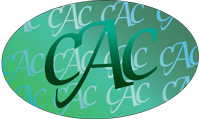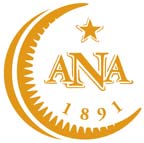Two Cent Pieces
The Two Cent Piece was issued from 1864 to 1873 and was the first coin to feature the motto IN GOD WE TRUST.
All coins were made in Philadelphia with the final year, 1873, being a scarce proof-only issue. The Two Cent Piece was designed by James Longacre and is one of the shortest lived issues of U.S. coinage.
- Found 29 items
 1864 Large Motto. NGC. MS-66. RB.$1,225.00
1864 Large Motto. NGC. MS-66. RB.$1,225.00An attractive satiny blend of orange and brown luster with a sharp strike and no significant marks.
Item #206065 (1 / 29) 1864 Large Motto. PCGS. PR-65. BN.$2,050.00
1864 Large Motto. PCGS. PR-65. BN.$2,050.00A wonderful first-year proof with touches of blue-green, gold, and ruby hues highlighting medium brown reflective fields. The strike is razor sharp and the surfaces are devoid of significant marks and spots.
Item #233047 (2 / 29) 1864 Small Motto. NGC. MS-65. BN.$2,495.00
1864 Small Motto. NGC. MS-65. BN.$2,495.00Sharply struck and lustrous with chocolate brown surfaces that have a subtle iridescent blue-green hue.
Item #243272 (3 / 29) 1864 Small Motto. PCGS. F-15.$435.00
1864 Small Motto. PCGS. F-15.$435.00Medium brown surfaces.
Item #204900 (4 / 29) 1864 Small Motto. PCGS. MS-63. BN.$1,689.00
1864 Small Motto. PCGS. MS-63. BN.$1,689.00Sharply struck and nearly mark-free. The surfaces are a pleasing medium brown with hints of subtle blue accent. Very scarce, particularly in mint state!
Item #140468 (5 / 29) 1864 Small Motto. PCGS. VF-25.$525.00
1864 Small Motto. PCGS. VF-25.$525.00Medium-brown.
Item #129696 (6 / 29) 1865. NGC. MS-63. BN.$239.00
1865. NGC. MS-63. BN.$239.00Sharply struck medium brown surfaces with traces of mint red.
Item #209906 (7 / 29) 1865. PCGS. MS-64. RB.$425.00
1865. PCGS. MS-64. RB.$425.00Tan and mint red surfaces with splashes of blue-green hues.
Item #236244 (8 / 29)
 1865. PCGS. MS-65. RB.$1,095.00
1865. PCGS. MS-65. RB.$1,095.00CAC. Fancy 5. A sharp strike with vibrant tan and mint red luster.
Item #213805 (9 / 29) 1866. NGC. MS-64. BN.$335.00
1866. NGC. MS-64. BN.$335.00Sharply struck with lustrous medium brown surfaces.
Item #118012 (10 / 29) 1867. PCGS. F-15.$325.00
1867. PCGS. F-15.$325.00Doubled Die Obverse. Solid detail with medium brown surfaces.
Item #245925 (11 / 29) 1867. PCGS. MS-63. BN.$3,995.00
1867. PCGS. MS-63. BN.$3,995.00Doubled Die Obverse. IN GOD WE TRUST, the arrows, and parts of the shield are clearly doubled. This is a pleasing example with faded reddish-brown surfaces.
Item #248266 (12 / 29) 1868. NGC. MS-63. BN.$269.00
1868. NGC. MS-63. BN.$269.00Sharply struck with lustrous medium brown surfaces.
Item #243593 (13 / 29) 1868. PCGS. MS-64. RB.$625.00
1868. PCGS. MS-64. RB.$625.00Medium brown and mellow orange.
Item #126120 (14 / 29)
 1870. PCGS. MS-65. RB.$1,795.00
1870. PCGS. MS-65. RB.$1,795.00CAC. A wonderful example of this better date with lustrous surfaces that are well blended with a light brown and original mint red. Sharply struck and great eye appeal!
Item #223163 (15 / 29) 1871. NGC. MS-64+. RB.$1,195.00
1871. NGC. MS-64+. RB.$1,195.00Sharply struck with nice clean surfaces and considerable mint red.
Item #250190 (16 / 29) 1871. NGC. PR-66. BN.$1,595.00
1871. NGC. PR-66. BN.$1,595.00Beautiful medium brown surfaces blend with violet-blue highlights and strands of mint red.
Item #250038 (17 / 29) 1871. PCGS. AU-50.$209.00
1871. PCGS. AU-50.$209.00Medium brown
Item #221449 (18 / 29) 1872. PCGS. AU-53.$1,575.00
1872. PCGS. AU-53.$1,575.00Well detailed with beautiful light copper tan surfaces. This is the key date to the regular issues in the series with by far the lowest mintage at 65,000. The second lowest mintage is 721,250 for the 1871.
Item #247713 (19 / 29)
 1872. PCGS. MS-65. BN.$5,750.00
1872. PCGS. MS-65. BN.$5,750.00CAC. Well struck and mark-free with highly lustrous surfaces that show lots of mint red. This scarce date is much more frequently encountered as a Proof rather than as a high grade business strike.
Item #243892 (20 / 29) Show more items...
Show more items...
- 29 items found














